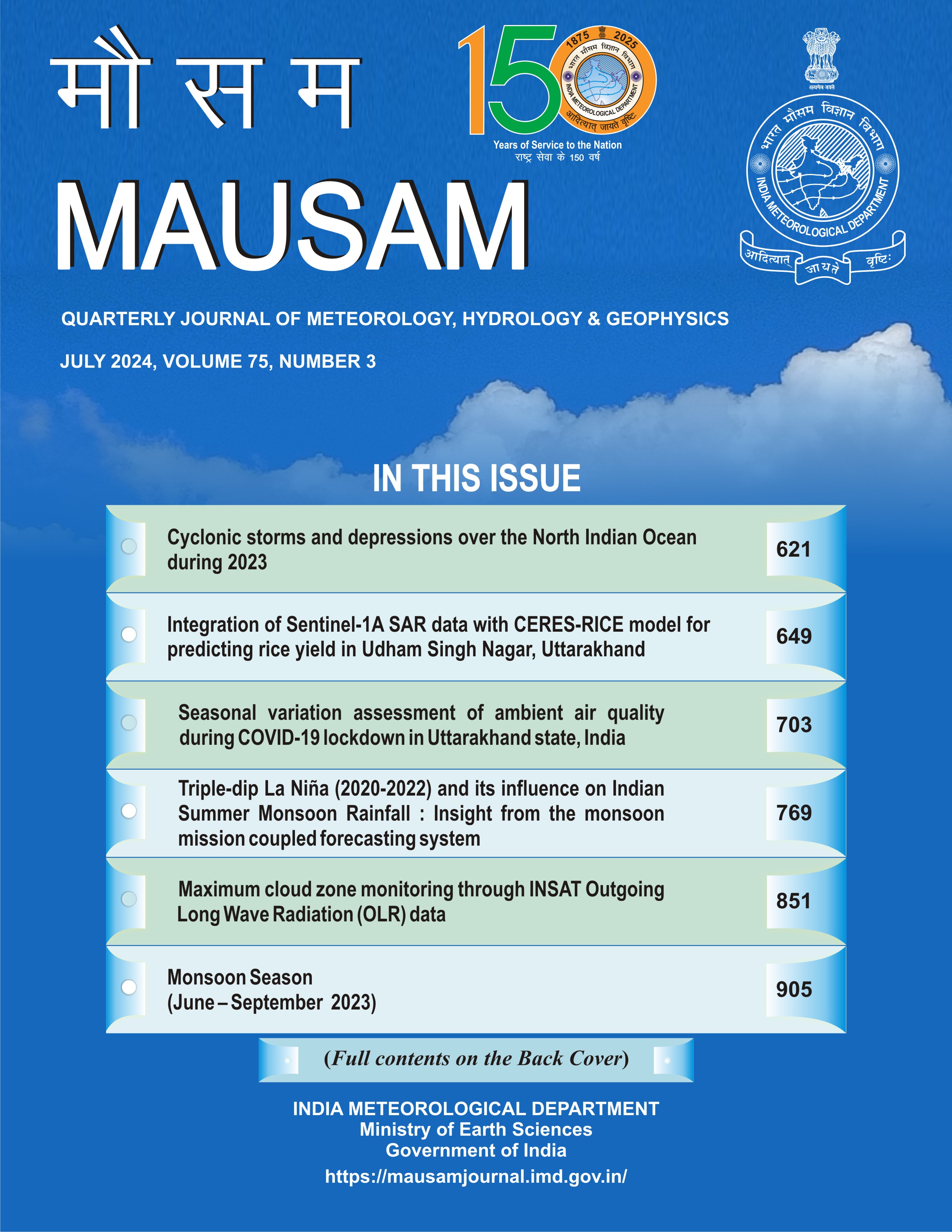Triple-dip La Niña (2020-2022) and its impact on Indian Summer Monsoon Rainfall: Insight from the Monsoon Mission Coupled Forecasting System
DOI:
https://doi.org/10.54302/mausam.v75i3.6283Abstract
The El Niño-Southern Oscillation (ENSO) is the most important driver of the Indian summer monsoon rainfall (ISMR) interannual variability. In recent years, there have been three consecutive La Niña years (2020–2022), which are widely known as the ‘triple-dip’ La Niña. This study discusses the observed variations in SST and ISMR during these triple-dip La Niña episodes. It was seen from the observed record that there have been four instances of triple-dip La Niña occurrences (1954–1956, 1973–1975, 1998–2000, and 2020–2022) during which ISMR was on the positive side of normal for most of the years. This study also evaluates the performance of the operational Monsoon Mission Climate Forecasting System (MMCFS) model in forecasting La Niña and its associated variability in ISMR during the recent triple-dip La Niña period (2020–2022). The results indicate that the model successfully forecasts the strength and patterns of La Niña during the monsoon season when initialized with April and May initial conditions. The model also forecasts the above-normal rainfall over many parts of India accurately. However, it fails to forecast the observed below-normal rainfall over the central-east Indo-Gangetic plains and northeast India for all three years. While climate models generally exhibit skill in forecasting ENSO-associated Indian summer monsoon seasonal rainfall, accurately predicting the spatial variability of rainfall over India remains a challenge.
Downloads
Published
How to Cite
Issue
Section
License
Copyright (c) 2024 MAUSAM

This work is licensed under a Creative Commons Attribution-NonCommercial 4.0 International License.
All articles published by MAUSAM are licensed under the Creative Commons Attribution 4.0 International License. This permits anyone.
Anyone is free:
- To Share - to copy, distribute and transmit the work
- To Remix - to adapt the work.
Under the following conditions:
- Share - copy and redistribute the material in any medium or format
- Adapt - remix, transform, and build upon the material for any purpose, even
commercially.



